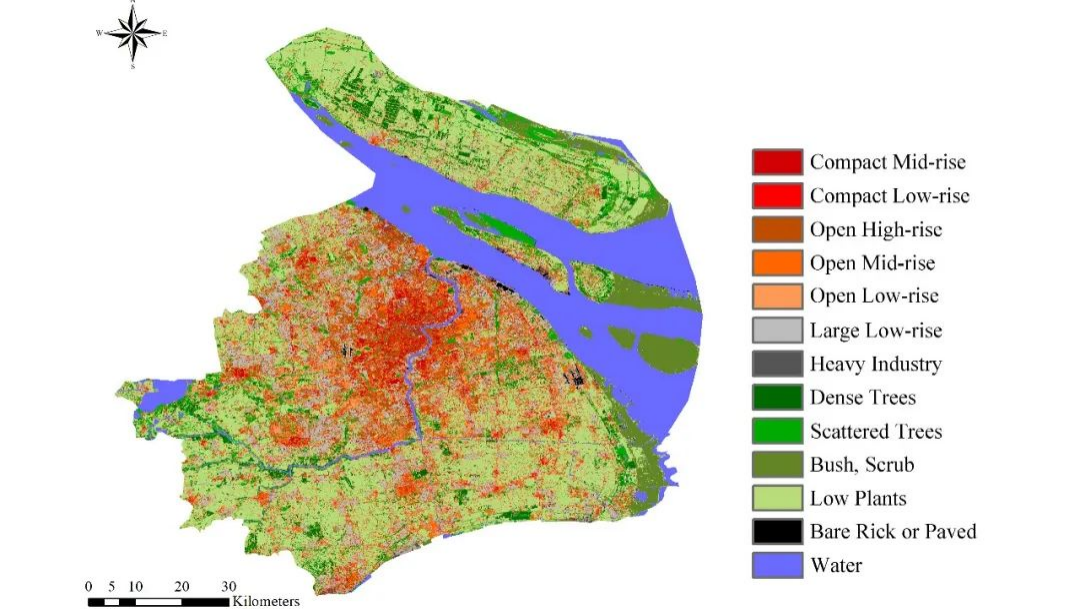
Recently, the sustainable ecological design team led by Professor CHE Shengquan, from the School of Design cooperated with Professor Afshin Afshari from the Fraunhofer Institute for Building Physics in Germany. Their results of their collaboration were published in the high-level international journal Science of The Total Environment in the article “LCZ method is more effective than the traditional LUCC method in interpreting the relationship between urban landscape and atmospheric particles” (impact factor 10.753, JCRQ1, Top of Chinese Academy of Sciences SCI Area 1).
This paper demonstrates that the landscape classification method of local climate zones (LCZs) including three-dimensional attributes is more advantageous than the traditional land cover (LUCC) landscape classification method in explaining the driving mechanism behind the spatial distribution of urban atmospheric particulate matter. It also further clarifies the influencing mechanism of the urban landscape on the distribution and diffusion of atmospheric particles, and how this can inform the construction of urban human settlements, and promote the improvement of landscape planning and management capabilities.
Abstract:
Landscape classification methods significantly impact the exploration of the mechanism of the relationship between landscapes and atmospheric particulate matter. This study compared local climate zones (LCZs) and traditional land use/cover change (LUCC) landscape classification methods in explaining spatial differences in concentrations of atmospheric particulate matter (PM2.5 and PM10) and explored the mechanisms involved in how landscape elements affect atmospheric particulate matter. This was done by establishing a PM2.5 and PM10 land use regression (LUR) model of LCZ and LUCC landscapes under low, typical, and high particle concentration gradients in urban and suburban areas. The results show that under an LCZ classification system, the number of patches in the urban area of Shanghai was 548 times higher than that of a LUCC system. Moreover, LCZs were successfully established for LUR models in 12 scenarios, while only five models were established for LUCC, all of which were suburban models. The R2 of the LUR model based on the LCZ landscape and atmospheric particulate matter was mostly higher than that of the LUCC. For unnatural landscapes, the LUCC demonstrated that an urbanized environment positively affects the concentration of atmospheric particles. However, the LCZ analysis found that areas with high-density buildings have a positive effect on atmospheric particles, while most areas with low-density buildings significantly reduced the number of atmospheric particles present. Generally, compared with the traditional LUCC landscape classification method, LCZ integrates Shanghai’s physical structure and classifies the urban landscape more accurately, which is closely related to the urban atmospheric particulate matter, especially in the urban area. Because the low-density building area has the same effect on the particulate matter as the natural landscape, the use of low-density buildings is recommended when planning new towns.
Keywords:LUCC; LCZ; Particulate matters; Land use regression; Urban landscape pattern

